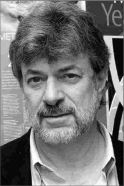
|
{
C O N T E N T S } Affiliated
Conferences Download Newsletter pdf |
|
2003 ISCB Senior Scientist Achievement Award
The ISCB will present the first-ever ISCB Senior Scientist Accomplishment Award to David Sankoff, Canada Research Chair in Mathematical Genomics at the University of Ottawa and a member of the Centre de Recherches Mathématiques at the Université de Montréal. The prize will be awarded to Sankoff at ISMB2003, where he will present a keynote lecture on July 2, 2003. The Senior Scientist Accomplishment Award recognizes members of the computational biology community who are more than 12 to 15 years post-degree and have made major contributions to the field of computational biology through research, education, service, or a combination of the three. Over the past 30 years, Sankoff formulated and contributed to many of the fundamental problems in computational biology. In sequence comparison, he introduced the quadratic version of the Needleman-Wunsch algorithm, developed the first statistical test for alignments, initiated the study of the limit behavior of random sequences with Vaclav Chvatal and described the multiple alignment problem, based on minimum evolution over a phylogenetic tree. In the study of RNA secondary structure, he developed algorithms based on general energy functions for multiple loops and for simultaneous folding and alignment, and performed the earliest studies of parametric folding and automated phylogenetic filtering. Sankoff and Robert Cedergren collaborated on the first studies of the evolution of the genetic code based on tRNA sequences. His contributions to phylogenetics include early models for horizontal transfer, a general approach for optimizing the nodes of a given tree, a method for rapid bootstrap calculations, a generalization of the nearest neighbor interchange heuristic, various constraint, consensus and supertree problems, the computational complexity of several phylogeny problems with William Day, and a general technique for phylogenetic invariants with Vincent Ferretti. Over the last fifteen years he has focused on the evolution of genomes as the result of chromosomal rearrangement processes. Here he introduced the computational analysis of genomic edit distances, including parametric versions, the distribution of gene numbers in conserved segments in a random model with Joseph Nadeau, phylogeny based on gene order with Mathieu Blanchette and David Bryant, generalizations to include multi-gene families, including algorithms for analyzing genome duplication and hybridization with Nadia El-Mabrouk, and the statistical analysis of gene clusters with Dannie Durand. Sankoff is also well known in linguistics for his methods of studying grammatical variation and change in speech communities, the quantification of discourse analysis and production models of bilingual speech. |

